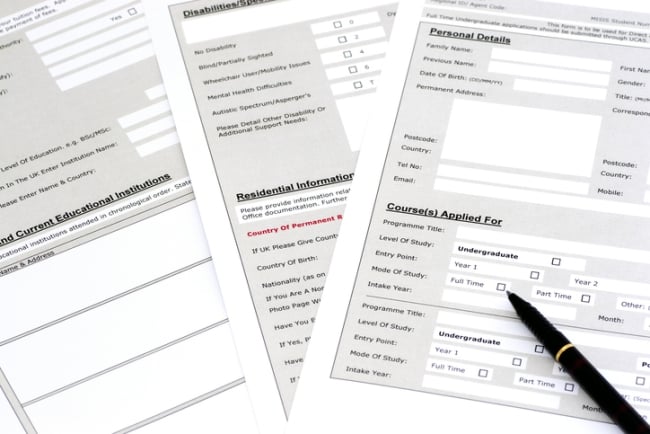You have /5 articles left.
Sign up for a free account or log in.

tattywelshie/e+/Getty Images
Earlier this year, President Biden proposed a 10 percent increase to the Pell Grant to lift the maximum annual award to $8,145. The proposal marks the latest step toward the federal government’s goal of doubling Pell by 2029—a move that reflects a broader effort by policymakers to increase college affordability.
While considerable resources have been devoted to affordability initiatives over the past two decades, a college degree remains staggeringly out of reach for many students. Financial barriers aren’t the sole reason for persistent gaps in college access and completion for students from underinvested communities; significant information deficits also play a major role.
When I immigrated to the United States from India, I had already earned a bachelor’s degree. I went on to earn a master’s and a doctorate in the United States and have since served in several leadership positions focused on connecting K-12 students to higher education. Yet even for someone like me, with specialized professional experience in the field, the path to and through college remains astoundingly opaque.
Questions abound for prospective college students and their families: Which high school courses should a student take? Are extracurriculars a value-add or a distraction? How does a student navigate the complex maze of paperwork required to sort out whether a family can even afford to send their child to college? Which pathways are most productive and empowering for students who come from low-income families and high-poverty high schools? Which colleges best fit their needs and goals? The answers can often elude the emerging majority of aspiring college students, many of whom are first-generation learners, come from low-income backgrounds and are the children of immigrants or immigrants themselves. This dangerous information imbalance is undermining the promise of higher education.
High school counselors work hard to get students the answers they need, but they are often overwhelmed by the number of learners they are charged with assisting. The average student-to-counselor ratio in high schools is estimated to be about 232 to one. Furthermore, most counselors are trained primarily to support students’ mental health and receive little or no formal training in college planning. Just one-third of U.S. public high schools have a counselor dedicated exclusively to college advising, and about 17 percent of high schools lack any kind of school counselor at all. Many students, especially those from low-income backgrounds or who are the first in their families to go to college, are left with nowhere to turn to find even the most fundamental information about the college admissions process, much less college.
Even before the botched rollout of the new Free Application for Federal Student Aid, an alarming number of students struggled to take this crucial first step in the college admissions process. Just 58 percent of the high school Class of 2023 completed a FAFSA. That translates to at least $4 billion in untapped federal student aid. Recent research from the Brookings Institution found that many students are grossly misinformed about the financial aid process. Students from lower-income backgrounds often incorrectly believed they were ineligible for federal financial aid because their high school grades were too low, their credit scores were poor or they were planning to attend college part-time. More than a third of students from low-income backgrounds who intended to go to college didn’t file the FAFSA because they did not know how.
Students are similarly underinformed about how to plan their college experience to lead to postgraduation success. Just about half (53 percent) of current college students strongly agree that their major will lead to a good job, and only slightly more than a third (36 percent) think they are gaining the skills they need for successful careers. This uncertainty lasts long after graduation. More than a third (36 percent) of U.S. adults say they would change their field of study if they could, and more than a quarter (28 percent) wish they could change the institution they attended. This lack of guidance at the beginning of students’ journeys affects them not just in college but also when they try to enter the workforce. More than half of graduates of four-year institutions (52 percent) remain underemployed a year after earning their degree.
This information imbalance has a profound impact on college access and completion despite a continued and growing emphasis on college affordability. Countless students who could benefit from the many advantages of a degree never enroll, and many see college as an experience that’s not meant for them. Among those who do go to college, nearly 40 percent never graduate.
In the last academic year alone, College Possible has worked with more than 25,000 students and 1,500 postsecondary institutions to help demystify the college-going process and clarify the path from enrollment to graduation. But the nonprofit sector cannot do this work alone. State policymakers and college leaders should work together to identify, support and scale near-peer coaching solutions that can help close these knowledge gaps, create a more equitable postsecondary education system and light the way forward for millions of hardworking and motivated learners who aspire to accomplish more in their lives.




